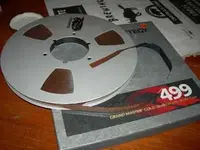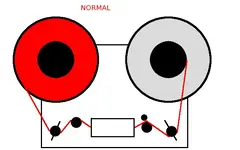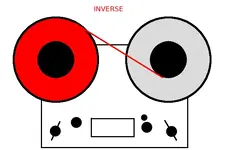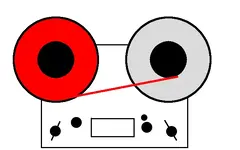LUNE
...a pieds joints
I got this 10" reel of (perhaps...) Quantegy 499 with my Tascam 38 from someone who knew nothing about either (he inherited it all from his dad).

By what process, reason or mistake would the tape have ended up shiny-brown-oxide-out on the reel? Is there an easy way for me to tell if its really 499? and perhaps most importantly, whats the best way for me to get it right way 'round to make it usable?
The machine also came with 2 empty reels (the original Tascam takeup reel and an empty 456) as well as a sealed 456 tape.
I'm still relatively new to tape, and I can't think of any reason or easy way it got like that. Any one have any ideas what happened here?

By what process, reason or mistake would the tape have ended up shiny-brown-oxide-out on the reel? Is there an easy way for me to tell if its really 499? and perhaps most importantly, whats the best way for me to get it right way 'round to make it usable?
The machine also came with 2 empty reels (the original Tascam takeup reel and an empty 456) as well as a sealed 456 tape.
I'm still relatively new to tape, and I can't think of any reason or easy way it got like that. Any one have any ideas what happened here?






 YMMV.
YMMV.